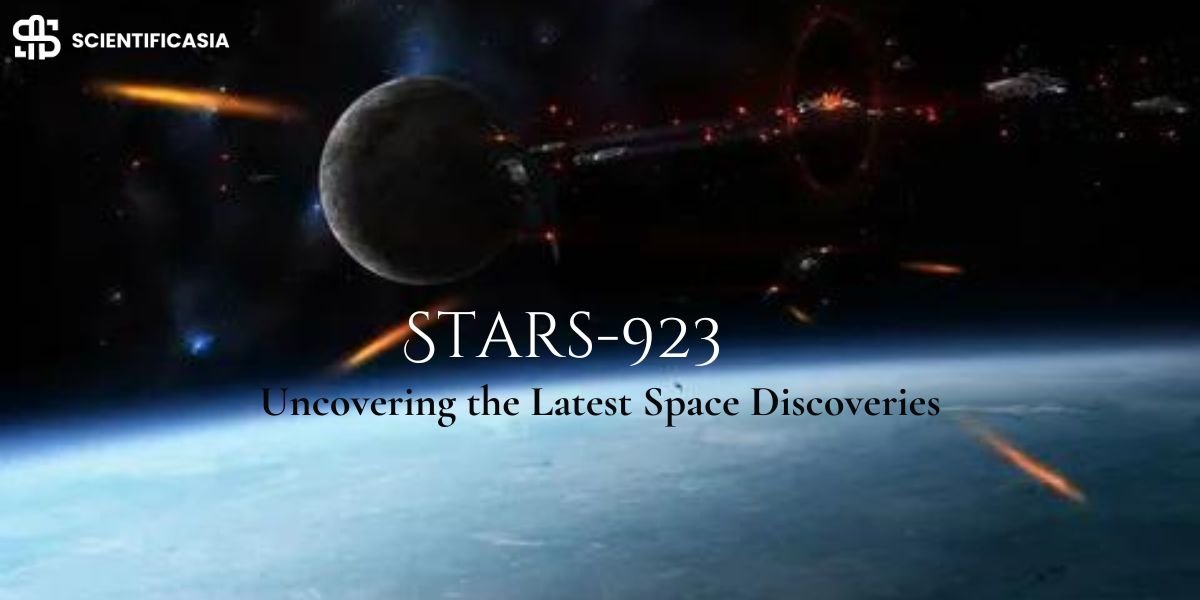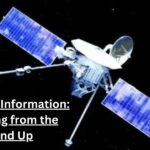Introduction
The huge and breathtaking universe is full of marvels that never cease to astound scientists and astronomers alike. One such astronomical phenomenon is Stars-923. This essay takes you on a journey to understand the nature of Star-923, its significance, and its impact on our understanding of the universe.
What is Stars-923?
For years, astronomers have been baffled by Stars-923, a strange celestial object. Its peculiar traits and behavior diverge greatly from the conventional patterns found in stars. Many theories exist about this mysterious object. They are due to the scientific curiosity it has sparked.
The variable brightness of Stars-923 is one of its most remarkable characteristics. Its brightness fluctuates quickly and unpredictably. This makes it hard to classify as a typical star.
Its spectral profile also differs from known stars, pointing to a distinct composition or mechanism. Star-923 is intriguing. Its rapid evolution makes it even more so. Its features are changing faster than expected.
History of Stars-923 and Its Discoveries
The fascinating past of Stars-923 appeals to both astronomers and amateurs.
In the early 20th century, scientists first observed Star-923. Its brilliance captivated them, and they were eager to learn more about the universe. Advancements in telescope technology have revealed more about this fascinating star. Spectroscopy allowed for new views of its behavior and composition.
Important findings came to light during important astronomical missions. High-resolution camera telescopes took precise pictures of Stars 923. They showed its special features.
In recent years, international observatories have collaborated. They have made groundbreaking discoveries about Star-923’s age, temperature, and possible nearby planets.
Astrophysics researchers are nevertheless intrigued by the ongoing investigation of Stars-923. Every new finding broadens our knowledge of this amazing celestial body.
The Birth of Stars-923
“Star-923’s journey begins in stellar nurseries, vast regions filled with dust and gas where new stars form. Gravity pulls these materials together, creating dense clusters. These clusters evolve into protostars. As these protostars gain mass, heat up, and ignite nuclear fusion, a new star is born.”
Stellar Nurseries
A key role for stellar nurseries is played in the development of Stars-923. These locations are rich in the factors needed to generate new stars. Gas and dust aggregate under the pull of gravity to create clusters that eventually become protostars. These protostars develop into mature stars over time, ready to embark on their cosmic journey.
The Mechanism of Nuclear Fusion
Nuclear fusion is the essential activity at the core of all Stars-923, providing their brightness. When hydrogen atoms fuse to form helium, they release a significant amount of energy, causing stars to shine brightly. Stars remain stable throughout their lives. Radiation pushes outward, while gravity pulls inward.
Classifying
It is possible to classify stars-923 into a variety of groups according to their size, temperature, and spectral classes. The main classes include the important star, giant, and dwarf series. Every version of the star has amazing qualities and levels of existence. Astronomers understand star classifications. This helps them study stars’ behavior and evolution.
Main Sequence
“The most common type of star, known as Star-923, is called a main-sequence star. These stars burn hydrogen in their cores for most of their lives. They remain stable against radiation pressure and gravity. Within this class, there are unique variations due to the wide range of temperatures and sizes among main-sequence stars.”
The Distinctive Features of Stars-923
Stars-923 is a celestial object whose peculiar and erratic activity makes it difficult to classify. These are a few of its most notable features:
Unstable Brightness
- Rapid Fluctuations: Stars-923 show abrupt and erratic variations in brightness. Its brightness can change significantly in brief intervals.
- Irregular Patterns: The fluctuations are neither periodic nor predictable. So, it’s hard to find a recurring pattern or cycle.
Unusual Spectral Signature
Deviant Wavelengths: Star-923 emits light with unknown wavelengths. They are not typical of any known star.
Unique Composition: This unusual spectral signature suggests that Star-923 may have a unique makeup or different processes than normal stars.
Rapid Evolution
- Accelerated Aging: Stars-923 seems to be aging or evolving at a much faster rate than expected for a star of its clear age.
- Short Lifespan: This rapid evolution could mean that Stars-923 is near the end of its life cycle. Or it could be in a very intense phase.
“Scientists are studying Star-923. Its oddities may reveal the cause of its unusual behavior.”
Theories and Speculations about Stars-923
Scientists are studying Stars-923 due to its strange behavior. They want to understand its anomalies and their causes.
Binary Star System
- Mutual Interaction: One theory suggests that Star-923 might be part of a binary star system, where two stars orbit each other. The observed variations in brightness and spectral signature may result from their interactions. Mass Transfer: If one star in the binary system is losing mass, it may be accreting onto the other, altering its characteristics. “Accreting Object”
- Feeding on Material: Stars-923 might be accreting material from a nearby disk or companion object. This accretion process could be responsible for the rapid changes in its properties.
- Disk Instability: Variations in the material reaching Stars-923 may be due to disk instabilities from the accreting material.
New Type of Star
- Unprecedented Object: Stars-923 might be an example of an as-yet-undiscovered class of stars. Its distinct features might say a class of cosmic objects that we have recently discovered and do not fully comprehend.
- A new kind of star exhibits unusual behavior. Its evolution may differ from that of known stars.
It is not possible to remove the adverb. Stars-923’s traits could be due to several processes working together. We must investigate and observe more to explain this mysterious celestial object.
The Best Ways to Watch Star-923 from Earth
If you’re an amateur astronomer or want to see Stars-923, you will be pleased. It is visible from Earth under the right conditions.
Top Methods for Observing Star-923 from Earth
“Observers can best see Star-923 during the fall and winter months when it reaches its highest point in the night sky. Its brightness makes it an ideal target for telescope users. In areas with little light pollution, people can even see it with the naked eye.”
Telescopic Viewing Tips
Even a simple telescope should provide a clearer picture of Stars-923. Look for a medium-sized aperture and observe on clear evenings to avoid air interference. If you want to see the system’s binary nature, use a greater magnification to find its partner star.
Must Read:
A Nuclear Explosion’s X-rays Could Divert an Asteroid
Massive Black Hole Jets Create a Marvelous Galactic Structure
The Importance of Studying Stars-923
Understanding Stars-923 is crucial for several reasons:
- Insights into Stellar Evolution: Studying stars like Stars-923 can teach astronomers about their birth, evolution, and death. Each star provides useful information that adds to the picture of stellar life cycles.
- Learning about Galactic Structures: Stars-923 can help us. It may reveal the structure and dynamics of its home galaxy. Scientists can learn about the formation and evolution of galaxies by studying their movement and behavior.
- Exoplanet Exploration: Astronomers know that some stars have planets in their orbits. Stars-923 research could find exoplanets, or planets outside our solar system, and life on those worlds.
How are Stars-923 studied by scientists?
Researchers study Stars-923, like many celestial phenomena, using various methods and technologies.
- Powerful telescopes: both on the ground and in space, observe Stars-923. These telescopes can collect light from the sky. They allow researchers to study its brightness, color, and spectrum.
- Spectroscopy: Astronomers use this technique to determine the composition of Stars-923. They can determine the elements contained in the star by examining the light it emits, as well as learn about its temperature and age.
- Computer Simulations: Scientists often use computer models to simulate stars and galaxies. These simulations can help forecast how Stars-923 will evolve.
The Mystery of Star-923: Recent Studies and Discoveries
While much about Star-923 is unknown, modern research has begun to uncover its secrets. Some researchers found evidence that Star-923 may have unusual brightness patterns. This implies it is a variable star. Variable stars’ brightness varies due to pulsation, rotation, and orbiting companions.
Stars-923 may also have a planetary system, which is an interesting prospect. Researchers aim ongoing observations at detecting any planets orbiting it. If scientists discover planets, they could yield a wealth of knowledge on various types of worlds and their atmospheres.
Images clicked by telescopes and satellites.
Many observatories and satellites have captured Stars-923’s stunning beauty. Each photograph tells a tale. They reveal details that deepen our understanding of this extraordinary star.
Telescopes like Hubble have captured stunning images of Stars-923’s bright light against the dark space. These photos provide an awe-inspiring view, emphasizing the brightness and surrounding celestial elements.
Satellites outfitted with superior imaging technologies provide even more details. They can see light signatures that the naked eye cannot. This reveals unknown dimensions in star compositions.
These beautiful photos not only inspire awe but also serve as important resources for astronomers. By analyzing these photos, researchers gain insights into the structure and activity of Stars-923 in its galaxy. The hunt for knowledge continues, with each photo adding another dimension to our cosmic narrative.
Edgenuity Earth and Space Science Answers
Historical Finding: NASA Discovers the Closest Supermassive Black Hole Pair As Twin Titans Collide
“Latest Discoveries and Research on Star-923”
Recent investigations on star-923 have revealed exciting discoveries. They call into question our previous knowledge. Researchers found unique spectral lines. They showed uncommon elements in the atmosphere.
A team from the Galactic Observatory found unusual temperature changes during their investigation. These changes suggest new, extreme conditions in similar stars.
Another exciting discovery is the possibility of exoplanets orbiting 923 stars. The search for planets has intrigued astronomers. They want to find life beyond Earth.
As scientists research, advanced imaging techniques provide sharper images than ever. This improved perspective is paving the way for novel theories about star evolution and behavior.
Each discovery makes our understanding of star-923 more complex. It has piqued the interest of the scientific community and beyond.
The Development of Internet Radio
To appreciate what Stars-923 has to offer, one must first comprehend the broader context of Internet radio. Traditional radio stations have always entertained. But the internet has changed things. Internet radio stations like it are not restricted by geography, allowing them to reach a global audience. This accessibility has helped to increase the appeal of Internet radio as a preferred medium for music and entertainment.
Why would you prefer Internet Radio Over Traditional Radio?
Internet radio has a few advantages over traditional radio. One of the major advantages is the lack of regional limits, which enables stations such as Stars-923 to broadcast worldwide. Also, internet radio offers a more personalized experience.
Users can make playlists and discover new music based on their tastes. These qualities make it, along with other internet radio stations, an appealing choice for modern listeners.
Tools Used to Study Stars-923
Scientists examine Stars-923 with radio telescopes, space probes, and spectrometers. Each instrument provides several types of information, such as light wavelengths and the amount of energy emitted by the star. Astronomers can try to comprehend what’s going on in this odd system by putting all this data together like a puzzle.
The Hubble Space Telescope has enhanced our view of this distant marvel. It has collected high-quality photos and data about it.
What Makes Stars-923 So Unique?
It is more than another point of light in the sky. It’s a system that operates in a manner distinct from most stars we know. Here are a few reasons why people regard this as unique:
- Unusual Light Patterns: Unlike regular stars, which shine continuously, it has lights that flicker. They seem to be signals as if they are communicating.
- Unique Energy Emissions: Scientists found unexpected bursts of energy from the star. This has perplexed even the most expert astronomers.
- Unknown Composition: We still don’t know its makeup. Early research suggests it may contain elements not found in other stars.
Future Frontiers in Astronomy
As technology develops, astronomers are finding new things about stars and their place in the cosmos. Along with exoplanets and gravitational waves, discoveries expand our knowledge of stars. They also offer fresh insights into the universe. Each advancement advances our understanding of celestial occurrences and the larger cosmos.
Exoplanet Discoveries
Researchers are always looking for planets around Star 923. These exoplanets might also support life or provide hints about how planetary systems form. Exoplanets broaden our knowledge of planet diversity and alien life.
Gravitational Waves and Stars-923
“Detecting gravitational waves has provided new insights into astronomy. Astronomers can learn about star-related events by studying ripples in spacetime. These events include black hole mergers and neutron star collisions. Gravitational waves reveal information about cosmic events that might otherwise remain invisible.”
The Uniqueness of Stars-923 in Science
Not only are stars-923 pleasant spots in the sky, but they also hold important secrets about the cosmos. Studying stars can help scientists learn how the universe works. From galactic dynamics to star formation, stars play a crucial role in our quest to understand the mysteries of the cosmos.
Stars-923 and the Cosmic Web
Stars 923 are a part of the cosmic web, which is the larger structure of the universe. The cosmic net is a vast system of interwoven filaments made up of galaxies and dark matter. Stars, by their gravity, affect matter in this network. They cause their distribution and migration. Knowing how stars fit in this structure gives key insights. It reveals the origins and growth of galaxies.
The Impact of Stars 923 on Planetary Systems
Stars-923 have a major impact on the development and evolution of planetary systems. Stars’ gravity affects the orbits of planets and other bodies in their systems. Furthermore, the potential habitability of planets is impacted by the power and radiation released by stars. Studying stars helps scientists know how planets and life can form.
The Search for Life Around Stars-923
The quest for extraterrestrial life is one of the most fascinating areas of star research. By studying the areas around stars, astronomers can find habitable-zone planets. This is the region where liquid water should exist. A key insight in the search for life beyond Earth is to find biosignatures and techno signatures in exoplanet atmospheres. These planets orbit stars.
The search for alien life is a top area of star research. Astronomers can identify habitable-zone planets by examining the environment around stars. This is the region where liquid water should exist. A key insight in the search for life beyond Earth is to find biosignatures and techno signatures in exoplanets’ atmospheres. These planets orbit stars.
Conclusion
Astronomy information on Star-923 is an intriguing field of study. Researchers want to solve cosmic riddles by studying this star and its surroundings. They want to learn about star formation, galactic structure, and extraterrestrial life. Each discovery from our stargazing, especially about Star-923, brings us closer to understanding our place in the universe.
Further study will reveal the mysteries of Stars-923. It will deepen our understanding of the vast universe we inhabit. A voyage to explore the wonders of Stars-923 will amaze you. It will do so, regardless of your astronomy skills.
FAQ’s
What is Stars-923?
Star-923 has baffled astronomers with a celestial phenomenon. Its behavior and features are very strange. Its brightness fluctuates rapidly. Also, its spectral signature is distinct. Its evolution seems to be occurring much faster than expected.
Why is Stars-923 considered unusual?
Star-923 deviates from the regular patterns observed in stars. Its rapid evolution, odd spectrum, and unstable brightness set it apart from other celestial objects.
What are the possible explanations for Stars-923’s behavior?
Several explanations have been put forth to explain the peculiarities of Star-923. Among them are:
- Binary Star System: Stars-923 may be part of a binary star system. Variations in the two stars’ interactions could cause its variability.
- Accreting Object: Stars-923 might be pulling material from a nearby disk or companion object. This may be changing its properties.
- New Type of Star: Stars-923 could represent a previously unknown type of star with unique characteristics.
Is there a consensus on the nature of Stars-923?
No, opinions on the nature of Star-923 are far from unanimous. Scientists are still researching and debating its features and potential causes.
What are the challenges in studying Stars-923?
Studying Star-923 presents several challenges, including:
- Unpredictability: Its sudden, erratic brightness makes it hard to study.
- Unique Characteristics: It has a unique spectral signature and evolves quickly. So, it requires specialist equipment and analysis methods.
- Distance and Limitations: Star-923 may be too far away or blocked by other celestial bodies. This would reduce the data that may be obtained.








